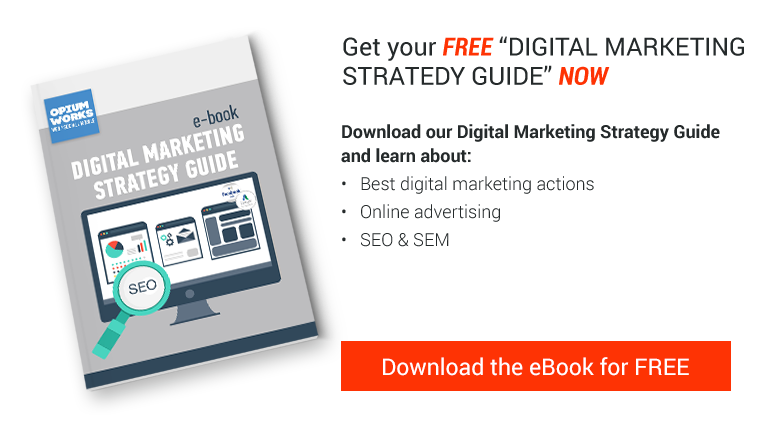Social Media has a real and measurable impact on a business’ bottom line. Thus, social media must be work in tandem with the rest of your business strategy.
To ensure that your social media marketing campaigns contribute to your brand’s greater business objectives, we 've prepared this 7 steps guide to help you get started.
Step 1: Ensure Social Goals Solve Challenges
Goal setting is a staple of all marketing and business strategies. Social media is no exception. Of course, with a range of social capabilities, it can be difficult to determine exactly what your objectives should be. For guidance, look to the challenges before you.
- Has website traffic dipped?
- Is customer loyalty low?
- Do you need to do a better job of building a positive brand reputation?
- Do you just need to make people aware that your product exists?
A smart social media marketing campaign can answer each of these questions. Prove your team’s worth by tackling them head on.
Step 2: Extend Efforts Throughout Your Organization
Social has long lived within the marketing department, but that doesn’t mean it can’t (and shouldn’t) have a hand in nearly every business function, from human resources to research and development. To create a fully integrated social media marketing campaign, you’ll need to involve and integrate multiple departments, especially if your goals have a direct impact on them. Work with all your teams to determine how you can best support their goals and what key performance indicators are important to them
Step 3: Focus on Networks That Add Value
Just because a network has billions of users doesn’t mean it will have a direct contribution to your brand’s objectives. Instead of trying to be everything to everybody, focus your efforts on networks that hold the key to your target audience and objectives.
Each network has its own strengths and weaknesses, and each social media marketer should carefully pick and choose which networks they want to take advantage of. Here are some of the most popular networks as well as what they’re best at.
With an audience of 1.23 billion monthly active users, Facebook offers an opportunity to reach a broad range of customers and potential customers. The chart below breaks down Facebook’s demographic representation—your target audience is most likely represented in some way.
But how can Facebook contribute to your overall goals? Because Facebook’s News Feed is a very visible place for social posts, it’s one of the best places for you to distribute your content in order to increase brand awareness, drive website traffic and distinguish yourself as a thought leader. This strategy is even more effective when you take advantage of Facebook’s targeting capabilities that allow you to tailor your messages to users with certain interests.
Where Facebook has the volume of users, Twitter has the volume of messages. In fact, there are over 500 million Tweets sent every day. With all those social messages, there is a great chance that someone is either mentioning your company or starting a conversation that you would be interested in joining.
That’s why Twitter is best to use as a customer service and business development channel. Monitor the network for inbound messages from dissatisfied customers, and quickly turn them into happy interactions. At the same time, look for prospective customers.
LinkedIn has a robust network of over 332 million users, most of whom frequent the site with a “working” mindset. The advantage with this is that LinkedIn is an amazing network for B2B social media marketers. Whereas sites like Twitter and Facebook catch users more or less on their personal time, LinkedIn gives you access to customers when they’re at their professional best. Use this to build relationships with future customers.
Step 4: Create Engaging Content
Once you’ve involved the right stakeholders, department, and networks, it’s time to start building engaging content for your social channels. This content—whether a video, tip sheet or simple Tweet—should all ladder up into your business objectives. Below are just a few examples of good content for social and how to use that to support your goals.
Videos
- How-to videos can be a proactive approach to social customer care—answer your customers’ questions before they’re asked.
- Behind-the-scenes videos give your audience a sense of your company culture and brand personality.
Guides
- Position your organization as a thought leader and elevate your brand by developing engaging content that speaks to your customers.
- Guides should cater to your target audience, ensuring you’re actually adding value.
Infographics
- Internal or external data can be turned into a beautiful, insightful infographic.
- When done right, infographics can be some of the most socially shared pieces of content, so make them engaging and resourceful.
Get ahead of the game by planning your content in advance, using a social media editorial calendar. We’ve put together this 4-step guide for creating a social media editorial calendar that should help you get started. Sprout also has a full suite of social media publishing features that include the ability to schedule and queue posts.
Step 5: Identify Business Opportunities Through Social
With millions of messages being sent across social channels every day, there is no doubt conversation happening around your brand. Social media monitoring, therefore, should be an essential part of your social media marketing strategy. Below are some ways you can monitor social media to identify larger business opportunities for your brand.
Brand Mentions
People who are mentioning your brand on social are some of the highest quality leads you can drive. They’ve already proved they know your product/service and have an interest in reaching out to you. Engage with them, foster that relationship and potentially create a brand advocate. If the mention was less than positive, use the opportunity to showcase your stellar social customer care and prove that you are listening.
Industry Terms
Think of some of the words you use when discussing your brand, and look out for them on social. By monitoring these terms, you can identify relevant hashtags you should be using, conversations you should be having and influencers with whom you should be engaging.
Competitor Info
Keep a pulse on the competition. Social media can give you insights into your competitors’ marketing plans and help you identify gaps in your product or service.
Step 6: Engage Instead of Ignore
We can’t say it enough: Whether someone is commenting on a post you’ve made, writing on your wall or mentioning you on Twitter, it’s important to always stay engaged. Shockingly, our experience shows that 5 in 6 messages on social requiring response are not answered by brands. If customers are consistently ignored, they’ll eventually ditch your brand altogether and look for an alternative.
Be sure to respond to customers who have left negative feedback about your brand as well. Too many companies have lost favor with their fans by trying to delete the message and sweep it under the rug. Check Burger King Cyprus Facebook Page with over 12,000 likes and 100% response rate.
Step 7: Track, Improve and Market Your Efforts
You won’t be able to really begin analyzing and improving your efforts until you’ve successfully got steps 1-6 operational. This final step is actually a step back, letting you figure out what’s working and what’s not.
Build on Success
Once you have a good understanding of which content is driving the most engagement, site visits and conversions, you can use that knowledge to increase your success. Write content and social media posts that are similar to the ones that have worked in the past. This is an ongoing process that will help you hone your unique social voice.
Share Your Success
The last step is to let the company know about the successes you’re finding—especially those who have a stake in the strategy. This allows you to prove the worth of social media and showcase its broader implications across your entire enterprise.
Plus, it doesn’t hurt to show off how hard you’ve been working.
Do not hesitate to Contact Us for a FREE consultation on how to set up a Digital Marketing Strategy.
Opium Works, for you.

